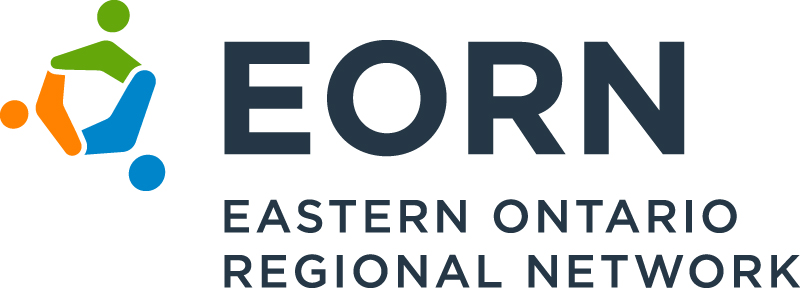Rural Impact is a joint venture between the Eastern Ontario Regional Network (EORN) and 2B Developments to address infrastructural challenges and other issues which negatively impact housing development in rural communities. This organization has been working closely with Frontenac County to review and study the creation of their municipal corporation and the introduction and implementation of communal systems within their county. Our goal is to accelerate the ability for rural development and growth in an economical, efficient and safe manner while maintaining the fabric of the existing communities with which we work.
Learn about the advantages of communal water and wastewater services | EngageFrontenac.ca
EORN is also supporting the Eastern Ontario Wardens' Caucus (EOWC) '7 in 7+' regional housing plan, which proposes to build at least 7,000 community rental units over 7 years, across the eastern Ontario region, to address the municipal community rental housing waitlists. For more information on matters related to this plan, please see below:
| Communal Services |
|
Communal services, also known as shared drinking water and sewage systems, provide water and wastewater treatment to clusters of residences and businesses. They may also be referred to as decentralized systems or cluster systems. These systems operate on principles similar to conventional municipal services but without the reliance on a single central facility where municipal water and sewer services are either non-existent, or beyond the fiscal capacity of local government. One company specialized in scalable water and wastewater treatment systems is Newterra out of Brockville. Their solutions are currently deployed across eastern Ontario including at the Whitehouse Terrace Hotel and Condominium Complex in Leeds and Grenville and the Bay Meadows Mobile Home Park in Prince Edward County. The video below is an example of a communal system in the Township of Southwold in southwestern Ontario.
Implementing communal services requires out of the box thinking. Official Plans might require amending to allow for alternative water and wastewater systems. All new communal service development will need land use planning approvals by the municipality and input from the public, and municipal staff might require training to be able to conduct proper inspections of these systems. The County of Frontenac is currently undertaking an innovative approach towards implementing communal services. They are creating a municipal services corporation (MSC) for the purpose of overseeing the design, installation and maintenance of the communal services. There is an excellent FAQ section on communal services on the County of Frontenac’s website.
Resources |
| Passive House |
|
Passive house -also known as Passivhaus, because of its German roots- refers to a rigorous standard for energy efficiency in building design and construction. The goal of passive house is to create structures that require minimal energy for heating or cooling, resulting in a significantly reduced environmental impact and lower energy bills for occupants. This standard can be applied to not only houses but also multi unit residential, apartments and commercial buildings. Passive house focusses on five main principles of design and construction being: super insulated building envelopes, extreme air tightness, high-performance windows, thermal bridge free detailing and heat recovery ventilation. The main consultants required for certification are a certified passive house designer (CPHD) and a passive house certifier. The CPHD will prepare an energy model of the building, verifying its performance with the standard. Ultimately there is final certification from the Passive House Institute of Germany. There are currently six levels of certifications that can be achieved starting from the most extreme.
Resources |
| 3D Printed Houses |
|
A 3D printed house is a structure that has been constructed using 3D printing technology. 3D printed buildings are put together by a large printer with one or more robotic arms. Attached to the arm is a hose with a nozzle that releases a form of mortar layer by layer. The type of mortar used varies from company to company and from project to project. 3D printing can be done throughout most of the year. In the winter, the printing could be done in a heated structure such as a large tent. While some 3D house printing companies have been around a few years now, it is still an evolving technology and as such continues to adopt new technologies and move towards full inclusion in the Ontario building code. 3D printed homes can be constructed in a highly energy efficient way, for example by printing a wall with a cavity that can then be filled with insulation. 3D printed homes typically generate less waste than traditionally constructed homes. One of the current limitations of 3D printed buildings is height. There are at least two companies in the 3D printing construction businesses in eastern Ontario, Cormor and Nidus3D. Nidus3D constructed North America’s first 3D printed two-story building on Wolfe Island while Cormor is involved with a 3D printing project for Habitat for Humanity near Peterborough.
|
| Net Zero Homes |
|
A net zero home produces as much energy as it consumes. Net zero homes can be either new or renovated. Net zero homes use renewable energy systems such as solar panels to generate electricity. Appliances and mechanical systems in the home are as energy efficient as possible. Net zero homes are not only attractive because they contribute to the reduction of green house gas emissions, they also protect home owners from rising energy costs. When reading up on net zero homes you will inevitably hear about net zero ready homes. While both are built in a way that they can produce as much energy as they consume, the net zero home is already doing that production, while the net zero ready home is not. The net zero ready home is constructed in the same way as a net zero home but the renewable energy systems -such as the solar panels- are not hooked up yet. The Federation of Canadian Municipalities (FCM) has a funding pilot program that is open to Canadian municipal governments who retrofit or construct new buildings that generate deep energy efficiencies and greenhouse gas reductions. Retrofits must achieve a 25 percent reduction in energy consumption. New construction projects are required to meet net zero energy/net zero energy ready standards.
Resources |
| Digital Permitting |
|
Digital permitting in its basic form refers to the process of obtaining permits through online or digital platforms rather than traditional paper-based methods. Taking advantage of digital permitting to streamline the permit application, review and approval process has the potential to reduce paperwork and increase transparency for both the permitting authorities as well as the applicants, while at the same time reduce the overall length of time to process development applications. Improving and digitizing the permitting process can save a lot of time for municipalities and applicants. For example, digitizing the building permit process could have applicants submit their documents and pay online, after which municipal staff get notified of a permit application and advance it digitally. Later on in the process, those who conduct inspections can pick up and update the file, and all along other staff that need to be included. Meanwhile, the applicant can follow along, which will reduce the amount of calls and emails staff will have to answer. Even required reports can be generated on the fly.
Resources There are several companies that specialize in digital permitting. Some of these include:
|

